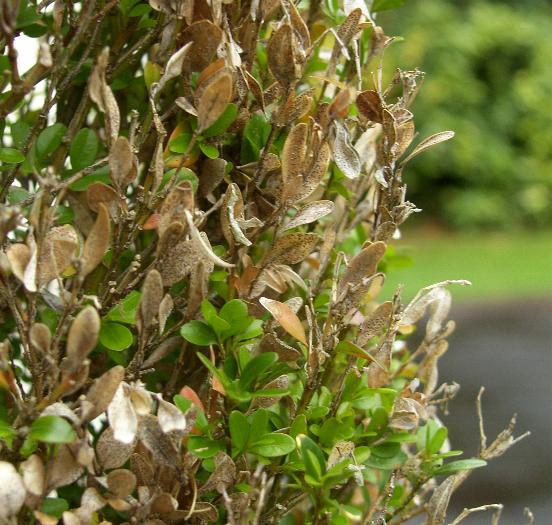

Sanitation plays a critical part in both the prevention and spread of boxwood blight. What to look for are whitish masses of spores on the underside of blighted leaves, often found near the base in container and field grown boxwood (Daughtrey M., & Gilrein D., & Vescera M. When introducing new boxwood to the landscape carefully examine them for any signs of the disease to avoid introducing the disease to existing boxwood. Ensure your boxwood have adequate air circulation around them so that the leaves dry quickly. The application of a mulch can help to prevent spores in the soil from splashing up on the plant.
#BOXWOOD BLIGHT TREATMENT FULL#
Other helpful strategies include the use of drip irrigation rather than overhead watering and locating your boxwood in full sun rather than shade. It is further advised to change up this fungicide regularly to prevent the fungi from growing resistant to it. If you have other boxwood on the property it is advisable to treat them regularly with a fungicide to help prevent infection. Removal of Pachyandra and Sarcococca from the immediate area is also advised as they can also harbour the fungi. Thoroughly cleanup all boxwood leaf litter, as the fungi can live in the dead leaves for a couple of years. Ideally the diseased boxwood should be removed or drastically cut back. English/Korean crosses like ‘Green Mountain’, ‘Green Velvet’, ‘Green Mound’, ‘Green Gem’ offer more resistance than English or American, but not as much protection as Korean. Asian species (like the Korean cultivars ‘wintergem’ and ‘wintergreen”) are typically more resistant, but can still become infected. Dark coloured stem lesions that appear as black streaks may also be found on young green stems.Īmerican and English boxwood are most susceptible. These spots often enlarge to encompass the whole leaf, and then the leaf usually drops from the plant (Daughtrey M., & Gilrein D., & Vescera M. Black, cloudy spots that lack a distinctive edge will begin to appear on the leaves. The disease then spreads systemically very quickly. Once the fungi begin to grow they enter the stomata (pores found in the epidermis of leaves and young stems that are involved in the exchange of carbon dioxide and water between plants and the atmosphere). Ideal temperature for growth is said to be 15-25 degrees Celsius (Daughtrey M., & Gilrein D., & Vescera M. Under magnification they look like white threads. If the fungi is present during ideal conditions it will begin to produce white spore masses on the underside of the leaves. You will typically see Boxwood Blight flair up during rainy or humid seasons, where the leaves stay wet for extended periods of time. This disease strikes healthy Boxwood, quickly causing mass defoliation. Boxwood Blight (also known as Cylindrocladium buxicola) is an aggressive fungal disease caused by the fungi Calonectria pseudonaviculata.


 0 kommentar(er)
0 kommentar(er)
